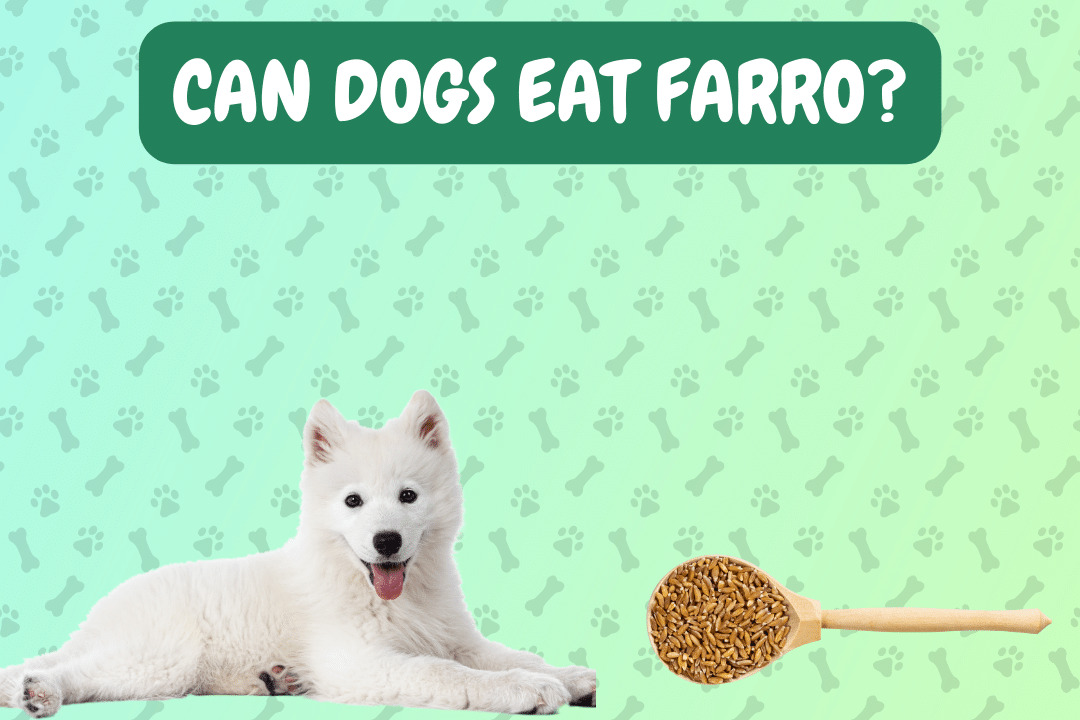Yes, dogs can eat farro in moderation, because it can provide some nutritional benefits.
Table of Contents
Introduction
Farro, an ancient whole grain known for its nutty flavor and nutritional value, has gained popularity as a healthy food for humans. As responsible pet owners, we often wonder if this nutritious grain can be included in our dog’s diet. In this article, we’ll explore the suitability of farro for dogs. Also its nutritional value, potential risks, serving guidelines, and offer insights from experts to help you make informed decisions about your dog’s diet.
Nutritional Value
Farro is a whole grain that contains complex carbohydrates, dietary fiber, and essential nutrients such as vitamins and minerals. It can provide dogs with energy and dietary fiber, which can support digestive health. Additionally, farro contains protein, although not as much as meat-based sources. That making it a suitable addition to your dog’s diet.
Potential Risks
While farro can offer some nutritional benefits, there are potential risks to consider. Farro contains gluten, which some dogs may be sensitive to, leading to digestive issues. Additionally, if served in excessive amounts, farro can contribute to weight gain and digestive upset. It’s essential to introduce farro gradually into your dog’s diet and monitor their response.
How to Serve Safely
If you choose to feed your dog farro, it’s crucial to cook it thoroughly and avoid seasoning it with ingredients. That can be harmful to dogs, such as onions or garlic. Plain, cooked farro is the safest option for your pet. Start with small portions to see how your dog tolerates it, and avoid serving it as the main component of their diet.
Serving Suggestions
Farro can be served as an occasional treat or mixed in with your dog’s regular dog food to provide some variety. It should not replace their primary diet, which should consist primarily of high-quality commercial dog food specifically formulated to meet their nutritional needs.
Special Considerations
Consider any specific dietary restrictions or allergies your dog may have. If you suspect your dog has gluten sensitivity or any adverse reactions to farro, consult with your veterinarian for guidance on their diet.
Expert Opinion
Many veterinarians and experts suggest that farro can be included in a dog’s diet in moderation, as it offers some nutritional benefits. However, they emphasize the importance of a well-balanced diet primarily based on high-quality commercial dog food to ensure that all of your dog’s nutritional needs are met.
Conclusion
In conclusion, dogs can eat farro in moderation, as it can provide some nutritional benefits. However, it should be served plain, without harmful seasonings, and should not replace your dog’s primary diet. It’s crucial to monitor your dog’s response to farro and consult with your veterinarian if you have any concerns about their diet or potential sensitivities.
FAQ
Q1: Can I feed my dog raw farro?
A1: No, raw farro is not recommended for dogs. It should be cooked thoroughly to make it safe and digestible for your pet.
Q2: How often can I give my dog farro?
A2: Farro can be given to your dog occasionally as a treat or as an addition to their regular dog food. It should not be a significant part of their diet.
Q3: Can puppies eat farro?
A3: While puppies can eat farro in moderation, it’s important to prioritize their primary diet, which should consist of puppy-specific commercial dog food to support their growth and development.
Q4: Are there any health benefits to feeding farro to dogs?
A4: Farro can provide some health benefits for dogs, including dietary fiber and essential nutrients. However, it should be part of a balanced diet and not the main source of nutrition.
Q5: Can dogs with food allergies eat farro?
A5: Dogs with food allergies or sensitivities may react negatively to farro due to its gluten content. If your dog has known food allergies, consult with your veterinarian before introducing farro into their diet.
Q6: Can dogs eat farro if it’s mixed with other ingredients like vegetables and meat?
A6: Yes, you can mix cooked farro with other dog-friendly ingredients like vegetables and lean meat to create a balanced and nutritious meal for your dog.
Q7: Can farro be used as a substitute for commercial dog food?
A7: No, farro should not be used as a substitute for commercial dog food. It lacks essential nutrients that commercial dog food is formulated to provide for your pet’s health.
Q8: Can farro be beneficial for dogs with digestive issues?
A8: Farro’s dietary fiber content can be helpful for dogs with mild digestive issues, but it should be introduced gradually and monitored for any adverse reactions.
Q9: Can dogs eat farro if they have gluten intolerance?
A9: Dogs with gluten intolerance may react negatively to farro due to its gluten content. It’s best to avoid farro and opt for gluten-free alternatives for these dogs.
Q10: Can I feed my senior dog farro?
A10: Farro can be suitable for senior dogs in moderation, but it should not replace their regular senior dog food, which is formulated to meet their specific needs as they age.
For more Dogs food informations, continue reading our blog.
Hello! I’m Max Walley, a pet enthusiast who knows a lot about what our animal buddies can munch on and what’s a no-no. With ‘canpeteat.it,’ I’m here to help pet owners make smart food choices. Come with me as we dive into the world of pet nutrition, discovering what keeps our furry pals joyful and in tip-top shape. Let’s explore this adventure together!


